Alexander N. Tait
Demonstration of Superconducting Optoelectronic Single-Photon Synapses
Apr 20, 2022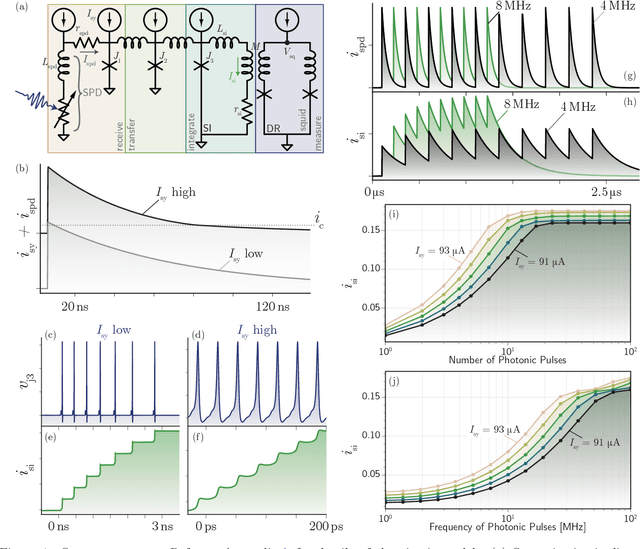
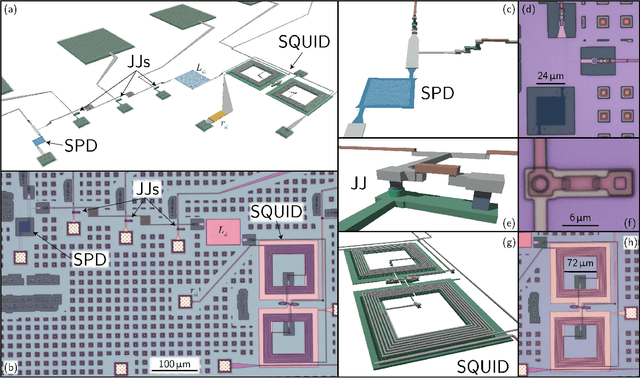
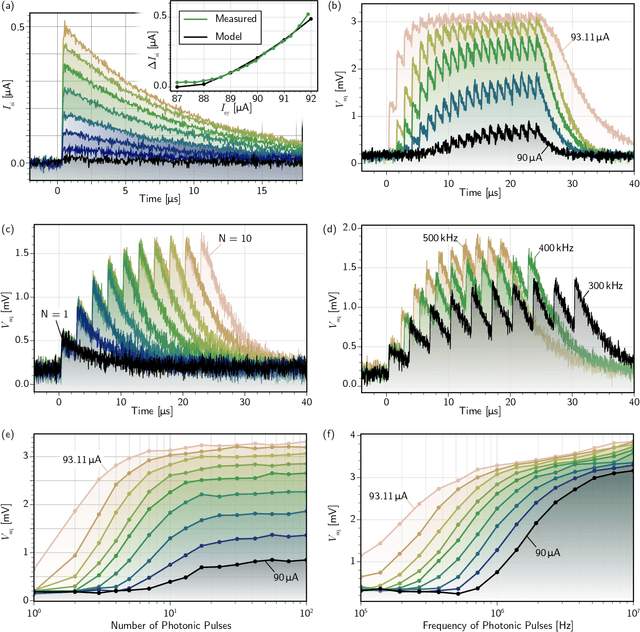
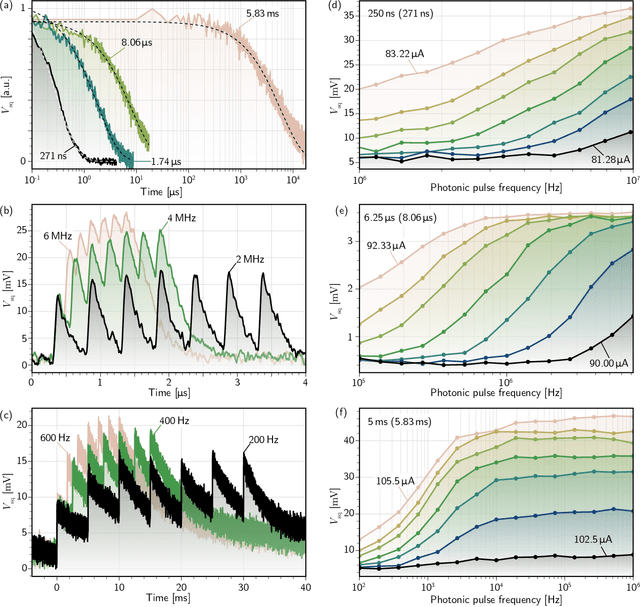
Abstract:Superconducting optoelectronic hardware is being explored as a path towards artificial spiking neural networks with unprecedented scales of complexity and computational ability. Such hardware combines integrated-photonic components for few-photon, light-speed communication with superconducting circuits for fast, energy-efficient computation. Monolithic integration of superconducting and photonic devices is necessary for the scaling of this technology. In the present work, superconducting-nanowire single-photon detectors are monolithically integrated with Josephson junctions for the first time, enabling the realization of superconducting optoelectronic synapses. We present circuits that perform analog weighting and temporal leaky integration of single-photon presynaptic signals. Synaptic weighting is implemented in the electronic domain so that binary, single-photon communication can be maintained. Records of recent synaptic activity are locally stored as current in superconducting loops. Dendritic and neuronal nonlinearities are implemented with a second stage of Josephson circuitry. The hardware presents great design flexibility, with demonstrated synaptic time constants spanning four orders of magnitude (hundreds of nanoseconds to milliseconds). The synapses are responsive to presynaptic spike rates exceeding 10 MHz and consume approximately 33 aJ of dynamic power per synapse event before accounting for cooling. In addition to neuromorphic hardware, these circuits introduce new avenues towards realizing large-scale single-photon-detector arrays for diverse imaging, sensing, and quantum communication applications.
Silicon photonic-electronic neural network for fibre nonlinearity compensation
Oct 11, 2021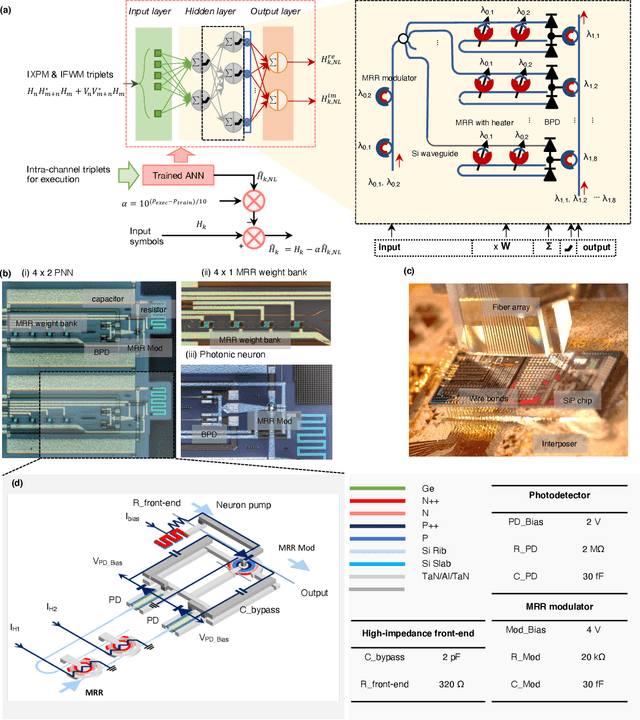
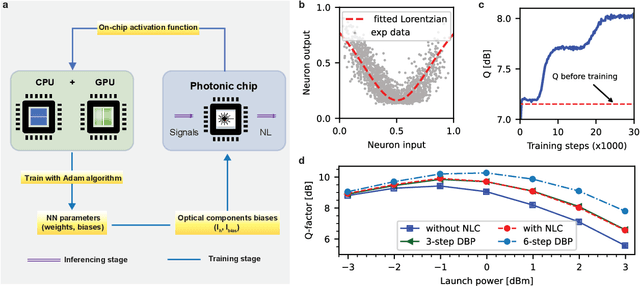
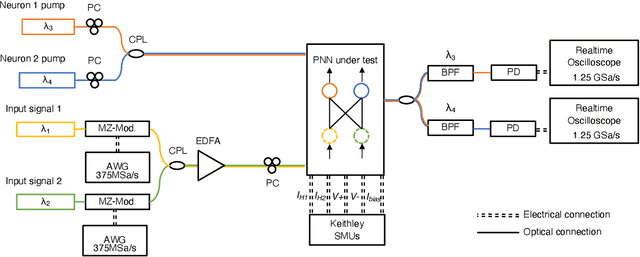
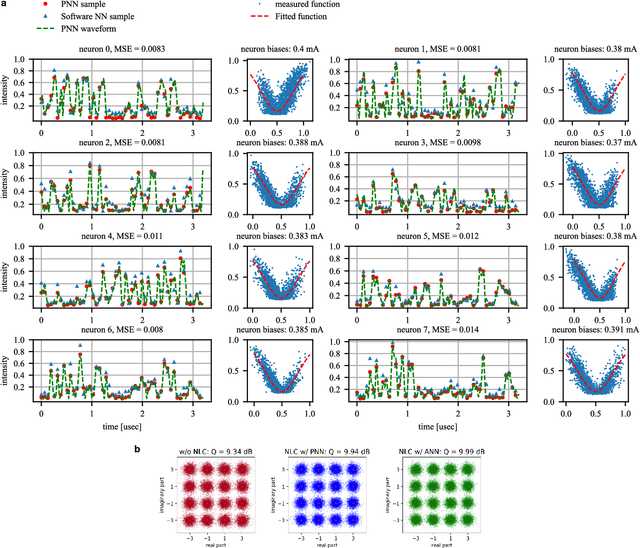
Abstract:In optical communication systems, fibre nonlinearity is the major obstacle in increasing the transmission capacity. Typically, digital signal processing techniques and hardware are used to deal with optical communication signals, but increasing speed and computational complexity create challenges for such approaches. Highly parallel, ultrafast neural networks using photonic devices have the potential to ease the requirements placed on the digital signal processing circuits by processing the optical signals in the analogue domain. Here we report a silicon photonice-lectronic neural network for solving fibre nonlinearity compensation of submarine optical fibre transmission systems. Our approach uses a photonic neural network based on wavelength-division multiplexing built on a CMOS-compatible silicon photonic platform. We show that the platform can be used to compensate optical fibre nonlinearities and improve the signal quality (Q)-factor in a 10,080 km submarine fibre communication system. The Q-factor improvement is comparable to that of a software-based neural network implemented on a 32-bit graphic processing unit-assisted workstation. Our reconfigurable photonic-electronic integrated neural network promises to address pressing challenges in high-speed intelligent signal processing.
Photonics for artificial intelligence and neuromorphic computing
Nov 12, 2020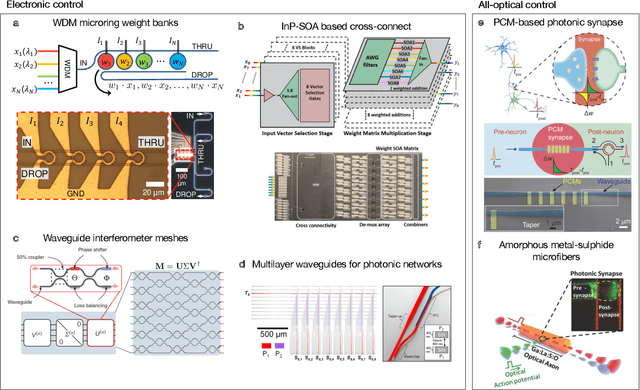
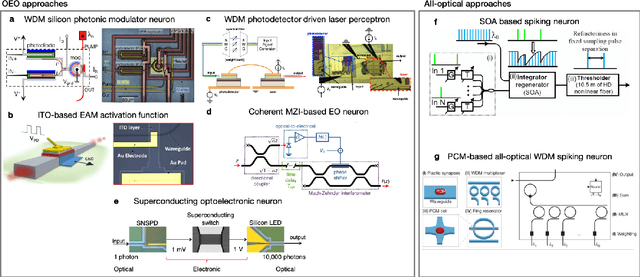
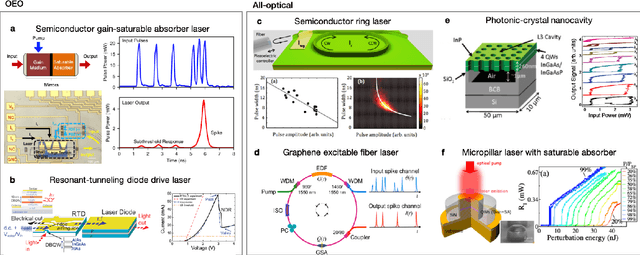
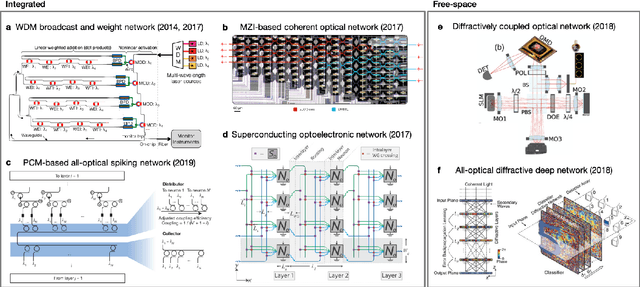
Abstract:Research in photonic computing has flourished due to the proliferation of optoelectronic components on photonic integration platforms. Photonic integrated circuits have enabled ultrafast artificial neural networks, providing a framework for a new class of information processing machines. Algorithms running on such hardware have the potential to address the growing demand for machine learning and artificial intelligence, in areas such as medical diagnosis, telecommunications, and high-performance and scientific computing. In parallel, the development of neuromorphic electronics has highlighted challenges in that domain, in particular, related to processor latency. Neuromorphic photonics offers sub-nanosecond latencies, providing a complementary opportunity to extend the domain of artificial intelligence. Here, we review recent advances in integrated photonic neuromorphic systems, discuss current and future challenges, and outline the advances in science and technology needed to meet those challenges.
Noise Analysis of Photonic Modulator Neurons
Jul 17, 2019
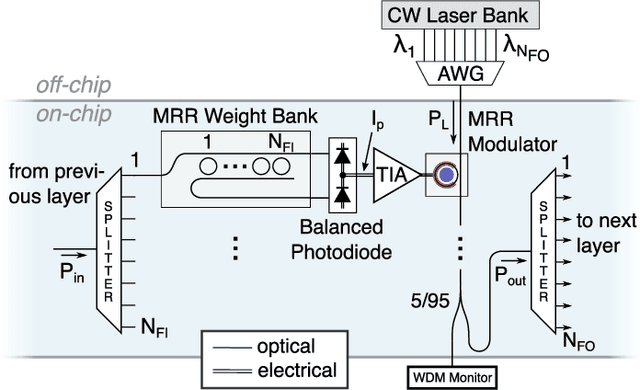
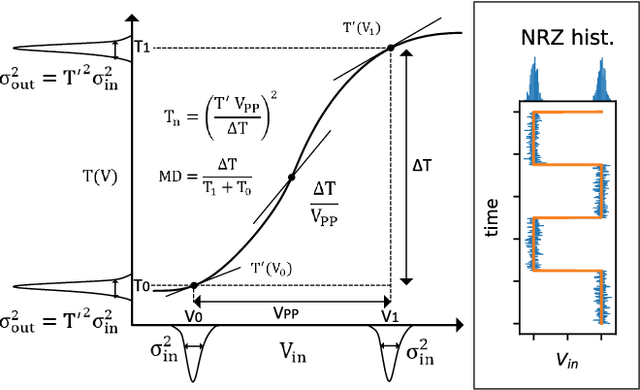
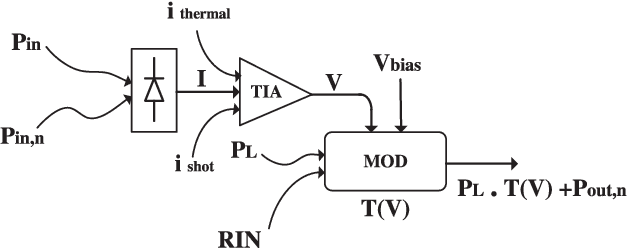
Abstract:Neuromorphic photonics relies on efficiently emulating analog neural networks at high speeds. Prior work showed that transducing signals from the optical to the electrical domain and back with transimpedance gain was an efficient approach to implementing analog photonic neurons and scalable networks. Here, we examine modulator-based photonic neuron circuits with passive and active transimpedance gains, with special attention to the sources of noise propagation. We find that a modulator nonlinear transfer function can suppress noise, which is necessary to avoid noise propagation in hardware neural networks. In addition, while efficient modulators can reduce power for an individual neuron, signal-to-noise ratios must be traded off with power consumption at a system level. Active transimpedance amplifiers may help relax this tradeoff for conventional p-n junction silicon photonic modulators, but a passive transimpedance circuit is sufficient when very efficient modulators (i.e. low C and low V-pi) are employed.
Neuromorphic Silicon Photonic Networks
Jun 12, 2017



Abstract:Photonic systems for high-performance information processing have attracted renewed interest. Neuromorphic silicon photonics has the potential to integrate processing functions that vastly exceed the capabilities of electronics. We report first observations of a recurrent silicon photonic neural network, in which connections are configured by microring weight banks. A mathematical isomorphism between the silicon photonic circuit and a continuous neural network model is demonstrated through dynamical bifurcation analysis. Exploiting this isomorphism, a simulated 24-node silicon photonic neural network is programmed using "neural compiler" to solve a differential system emulation task. A 294-fold acceleration against a conventional benchmark is predicted. We also propose and derive power consumption analysis for modulator-class neurons that, as opposed to laser-class neurons, are compatible with silicon photonic platforms. At increased scale, Neuromorphic silicon photonics could access new regimes of ultrafast information processing for radio, control, and scientific computing.
* 12 pages, 4 figures, accepted in Scientific Reports
 Add to Chrome
Add to Chrome Add to Firefox
Add to Firefox Add to Edge
Add to Edge